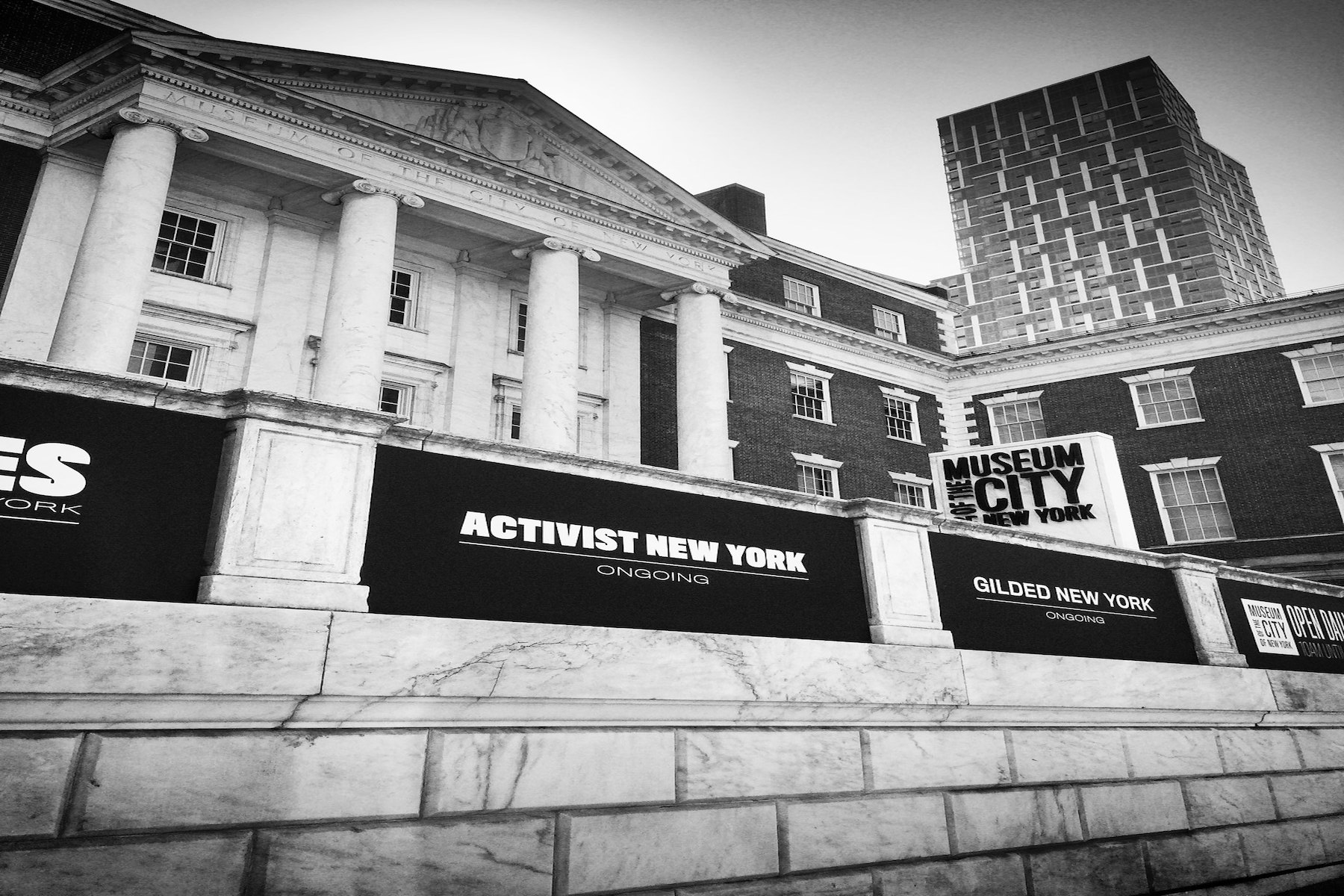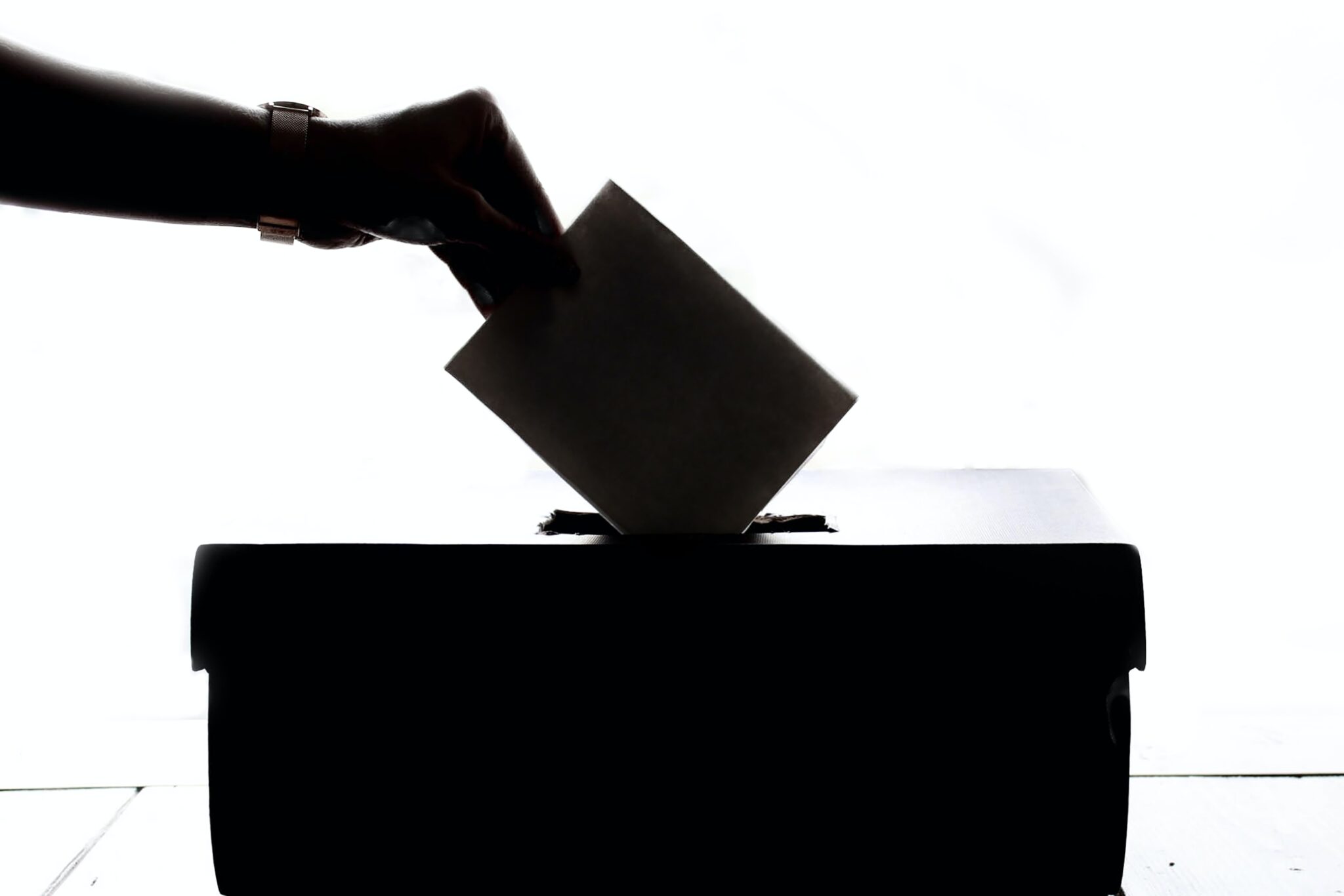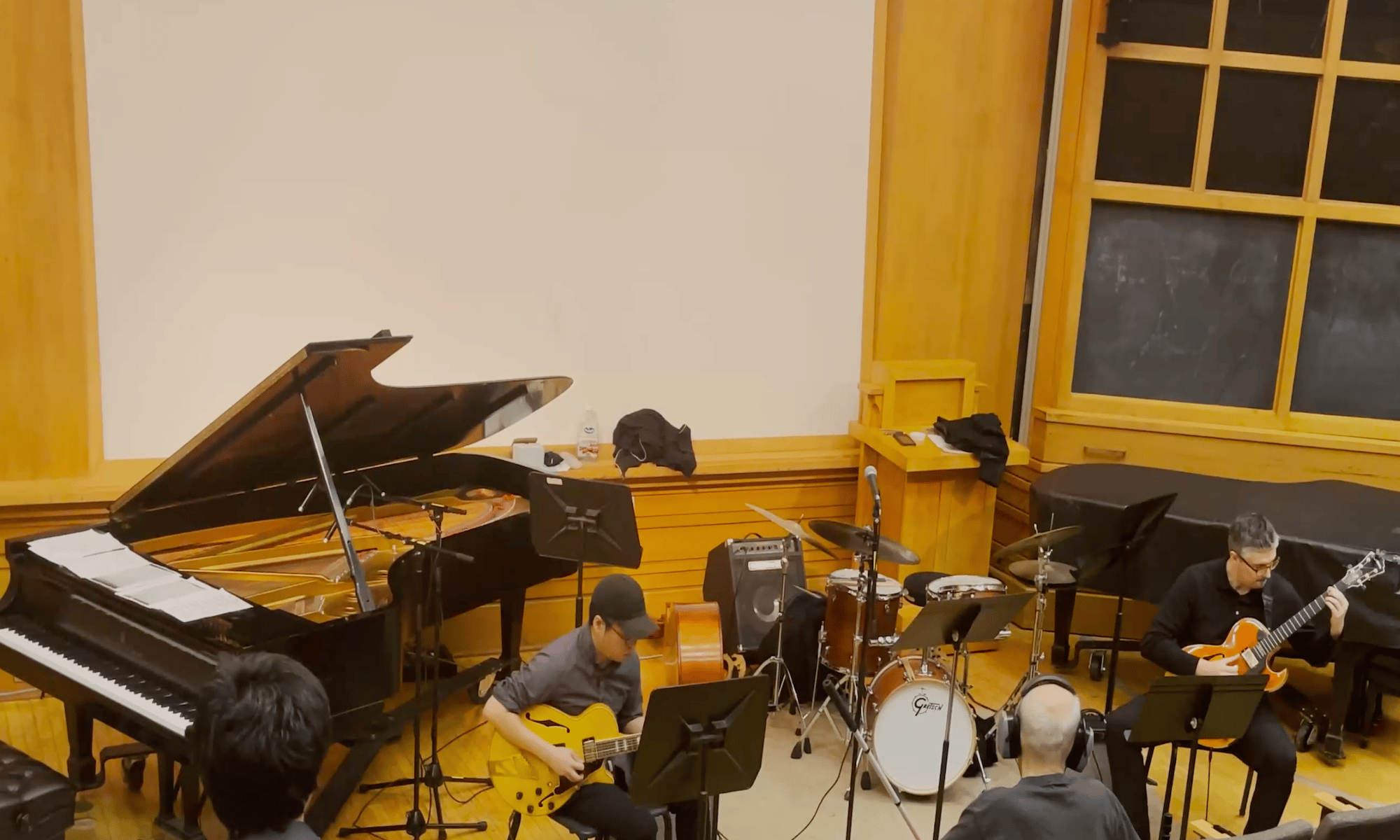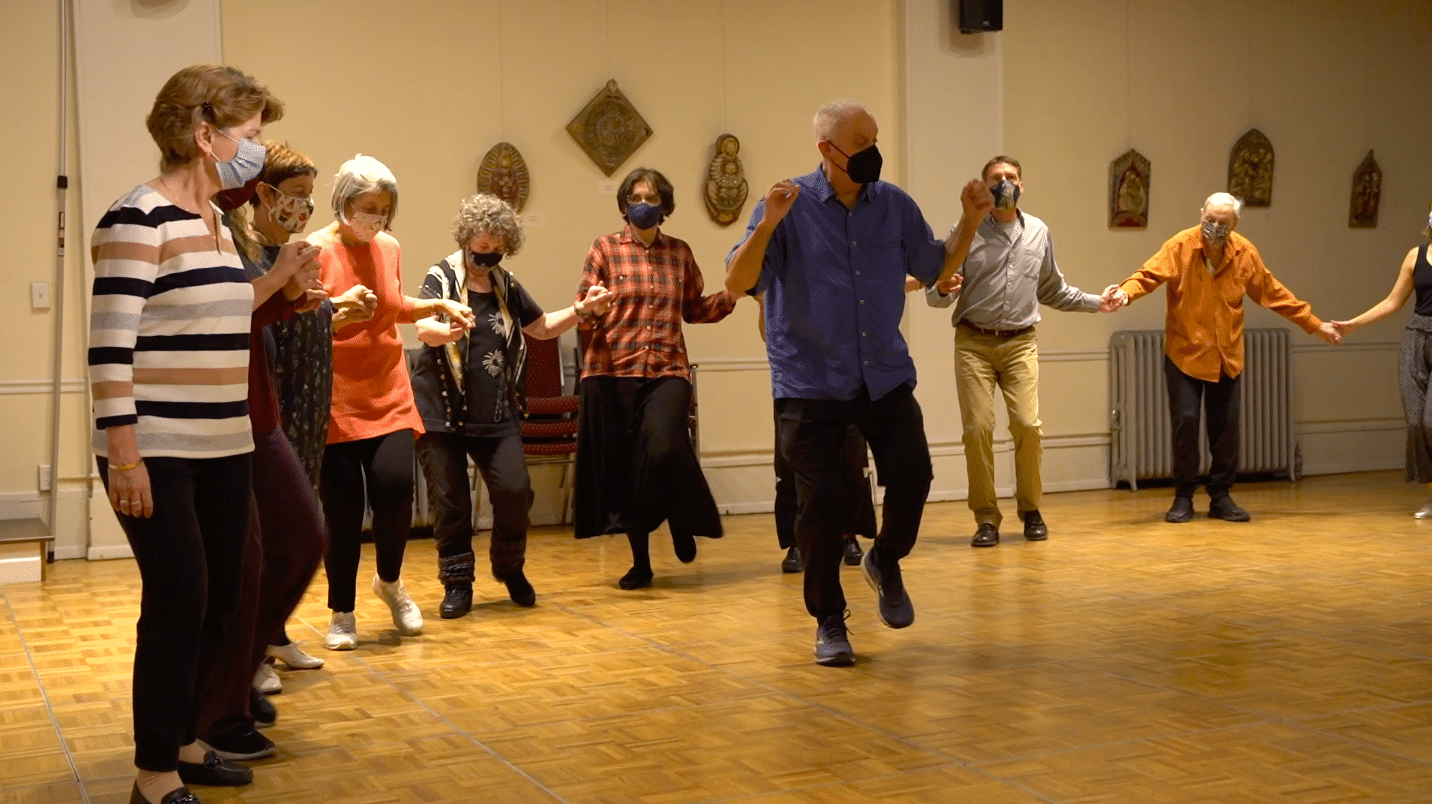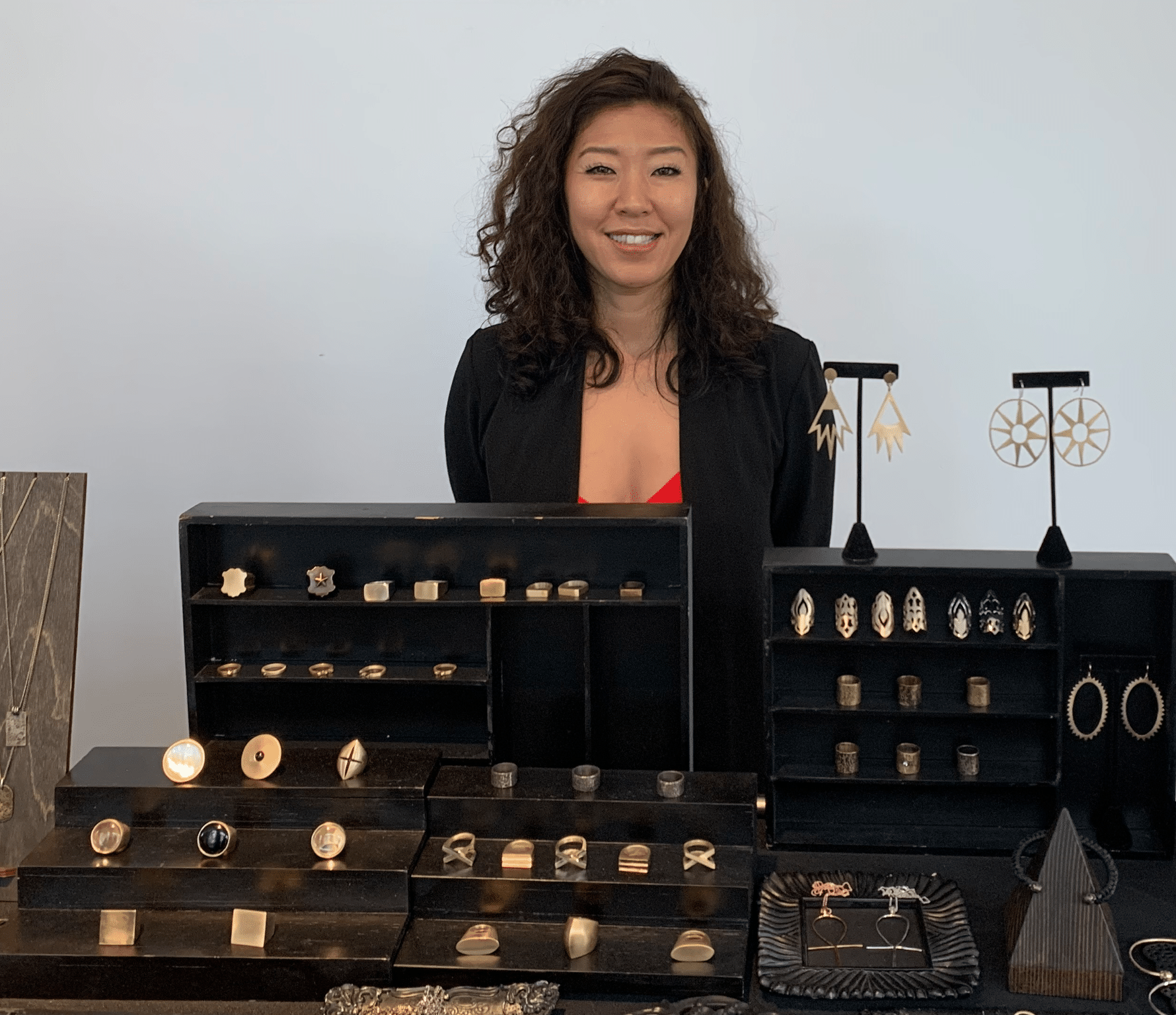Photo Museum of the City of New York by Sherry Nelson on Flickr. CC license https://creativecommons.org/licenses/by-nc/2.0/
New York City’s cultural institutions struggle to stay afloat one year after the COVID-19 shutdown. Governor Cuomo gave cultural institutions the green light to re-open on August 24. The restart six months into the pandemic came as a disappointment to museum officials and staffers. “We expected that museums would have been in one of the earlier phases of the reopening plan and when they got to that phase, they excluded museums,” said Jerry Gallagher, Chief Operating Officer at the Museum of the City of New York (MCNY). “Personally? It was dispiriting, challenging, frustrating, stressful.”
The shutdown went on for longer than people imagined it would. “I think everyone was of the same mindset that we were expecting that it might be six-eight weeks. It was a slow, gradual process to realize that this is going to be much longer,” said Gallagher. Whitney Donhauser, the MCNY’s director, closed the museum, notifying staff via email.
The museum furloughed 95 percent of its staff, laid people off and asked others to take pay cuts. Andrea Larson, a visitor services manager at the MCNY, lost her job initially. “[The shutdown] pretty much eliminated my position,” Larson said. “But we have returned. There has been a change in my role. You kind of have to be a lot more flexible,” said Larson, who travels from her home in New Jersey to the Upper East Side Friday, Saturday and Sunday—the only days the museum is open.
El Museo Del Barrio, sister museum to the MCNY, has also reopened only on weekends. The scaled back hours helps to reduce the spread of COVID-19 and save money. “When we re-opened in August, most days of the week, we were not earning enough to support the staff that are required to be here,” said Gallagher of the MCNY.
El Museo lost nearly a million dollars because of the cancelation of its annual gala. The shutdown made it impossible to rent out “El Teatro,” El Museo’s newly renovated theatre space. With the gift shop and café closed, the museum pitched into financial crisis.
The MCNY and El Museo Del Barrio are among thirty-four museums, arts groups, historical societies, zoos, and botanical gardens in the Cultural Institutions Group (CIG). The designated institutions receive money for basic costs, including security, maintenance and energy. But smaller institutions rely on money that walks through the door. “We definitely took a big hit in our earned income,” said Gallagher. “That’s the income we receive from people buying tickets to come to the museum, people buying merchandise in the shop, and the venue rentals.”
The need was so apparent that the Ford Foundation gave El Museo a $4 million dollar grant in September 2020. The New York City based foundation launched a $156 million-dollar initiative that will provide funding to culturally significant institutions and organizations.
For the MCNY, community engagement was a top priority. Some exhibitions made the transition to online, the education department had to adjust educational programming to meet the needs of schools and families, and educators even had access to professional development courses to learn how to better manage their own classrooms.
Behind the scenes, however, Gallagher and other COOs spoke on conference calls daily to compare re-opening strategies. “For chief operating officers, it was very much geared toward an operational aspect,” said Gallagher. “We agreed that we would all come up with a plan so that the experience for visitors coming to the museum would be very similar.”
Now that the museums have reopened, there is hope. Bronx native Julissa Taveras began her museum experience where she left off. The avid museum goer visited the Whitney Museum of American Art, in the Meatpacking District, when it reopened. It was the last museum she went to before the shutdown. “It was pretty great being back in those spaces with art,” said Taveras. “I felt pretty safe being there. There were sanitizing stations at different locations in the museum, and everyone was wearing a mask.”
Uptown at the MCNY, you enter a wide marble lobby that faces a sweeping staircase. A poster on a stand reminds visitors to wear a mask and marks on the floor encourage them to stand six feet apart while they wait to purchase a ticket. Plexiglass dividers at admission and retail desks create a barrier between staff and visitors. A visitor with an entry ticket will find sanitizing stations conveniently located throughout the building. Large institutions like The Met and MoMA implemented the same guidelines and suggest guests review them before reserving a ticket.
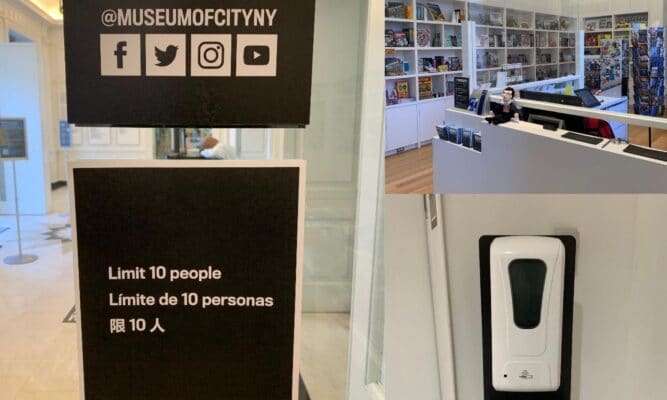
Number of people limited, plexiglass and hand-sanitizing stations: new additions to the recently opened The Museum of the City of New York. PC: Anthony Ruiz
As the city continues to successfully vaccinate New Yorkers, the future for museums seems brighter. “We’re all very hopeful,” said Gallagher. While tourism generates most of the income for cultural institutions, New Yorkers beginning to make their way back to museums and loans from the federal Paycheck Protection Program (PPP), will keep New York City’s beloved institutions afloat for now.
Museum’s urge visitors to stop by. “This is probably one of the safest places to come,” said Gallagher in response to reluctant museum goers. “If you are looking for something to do to get out of the house, we’re a great place to come to.” New York Responds, an exhibition that looks at the first six months of the pandemic and the Black Lives Matter protests in New York City, is on view through May 9 at the MCNY.
Tags: Anthony Ruiz City College Journalism Coronavirus COVID-19 Cuny financial crisis lockdown museums NYC museums reopening sanitizing stations social distancing The City College of New York The Museum of the City of New York
Series: Coronavirus
